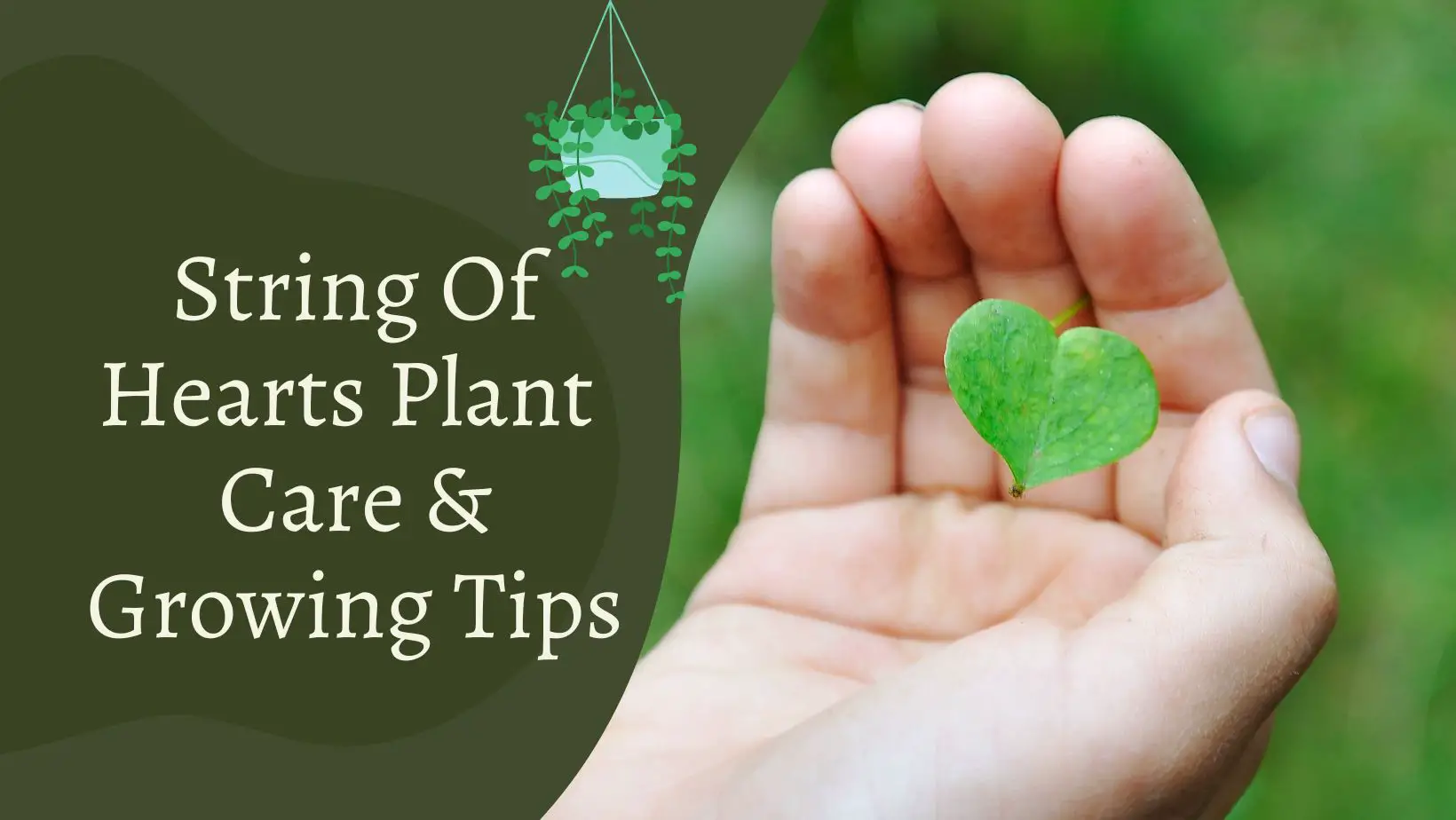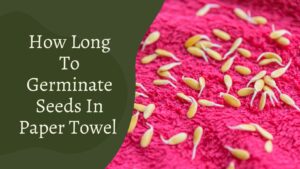
This is also Known as string of hearts plant and rosary vine, this long, Rapunzel-like plant is actually a fairly common species. It has heart-shaped leaves that are slightly variegated with green and silver tones on the underside.The underside of the leaf has a slight purple shade that you can see on the underside of the leaf.
It is a succulent plant with thick tendrils that grows in a vining fashion. The string of hearts plant normally blooms throughout the summer and autumn months, and the bloom has the appearance of a little vase with many small petals on it. This plant also produces aerial tubers.
Which are often formed at the node where two hearts come together and ultimately develop into a large root. This plant is also available in a number of various varieties. These plants are very easy to grow because they have a lot of nodes.
Which you can cut and put in water for propagation, or you can lay them on potting soil and they will grow on their own in a short time. If you give this plant the right care it can grow quickly same like moon valley plant.

1.String of Hearts light requirements:
Whether grown inside or outside in direct sunshine, a string of hearts plants need a lot of strong indirect light. Direct sunshine may cause the plant’s leaves to wilt and die. If you have them in a hanging pot, make sure that the light is shining squarely on top of the plant since this is the only way for them to absorb sunlight and grow thick and lush.
The amount of light available will determine the rate of growth of string of hearts plant. The size of the leaves, and the thickness of the vine and aerial tubers, all of which will be determined by the amount of light available; therefore, illumination is essential in maintaining healthy string of hearts succulent.
As a result, light is critical in the growth and development of heart-shaped plants. If you do not have access to the proper lighting conditions. You may also use grow lights or artificial light to help you develop this beautiful plant. Because this plant requires a lot of indirect light, grow lights or artificial light may be necessary.
2.Watering requirement:
When it comes to watering your string of heart plant, it is advised that you water only when the soil is absolutely dry. This is because this vining succulent or semi-succulent does store water in its leaves and vines, as well as in its tubers, which are also found in the roots of the plant.
As a result, be certain that the soil is fully dry before you water this plant. Regardless of whether you are using a plastic container or a gorgeous pot. You must make sure that the container you are using for your plant has drainage holes in order to properly water it.
The amount of water you should give your string of hearts plant, as well as the frequency with which you should water it, are dictated by the size of your string of hearts plant.
As an example, if you have a six-inch string of hearts container with a very long vine and a large number of tubers. The plant will require a lot of water, such as two watering cans every two weeks during the summer months and three watering cans every three weeks during the winter months, to survive.
How to tell that plant need water:
Rather than being thin, the hearts of a plant should be somewhat thicker rather than soft to the touch in order to tell whether the plant is thirsty or not. If they are firm, you may leave them for a few more days; however, if they are mushy. you should water them as soon as possible after harvesting.
3.String of hearts soil mixture:
The success of string of hearts is dependent on the availability of a loose, well-draining soil mix that is based on a cactus and succulent mix that contains bigger pieces of pertile as well as other organic matter for the ground cover, as well as enough moisture.
A little quantity of fine sand should also be added to the soil in order to give the garden a more natural aspect. It is advised that you use a cactus and succulent mix rather than a modified orchid mix in order to prevent the usage of a modified orchid mix in your arrangement.
This is the situation due to the fact that a cactus and succulent combination will provide higher coverage than a regular orchid and will not need as much bark as a typical orchid.
4.Repotting:
In most cases, the method for repotting a plant is the same as the procedure for repotting any other kind of plant. If you follow the “set it and forget it” rule with this plant, you will end up with a gorgeous plant as a result. Taking the plant out of the container and giving it a little massage can help to break up the root structure a little.
This is critical because we will be putting them into a soil mixture that is somewhat different from what you would find in a nursery environment.
5.Fertilizing:
During the summer and spring, you can use a gentle fertiliser and fertilise them every two weeks or so because they are fast growers. It is believe they would benefit from the nutrients. You can even fertilise them in the fall because they are still actively growing in the fall and will probably cut back a little bit during the winter months.
Propagation of string of hearts plant:
There are two methods for propagating your plant, and they are as follows:
- Soil
- Water
Water propagation:
If you want to propagate your plant through soil or water. You’ll need to choose a cutting point that is below a node, These leaves are linked to the node of the plant in which these leaves are linked to the node of the plant if you want to propagate your plant that way.
As a consequence of this phenomenon, you must first remove a little quantity of material from below the nodes before you can clean your shears with alcohol to avoid damaging them. The leaves should be removed carefully from the bottom node; be sure to grip the node and pull it gently.
Since removing the leaves has the potential to shred the stem, similar to the way that string cheese does. Taking the little water flask and putting it in a bowl of water will finish the procedure as soon as the leaf is separated from the node is done.
Which will take around 15 minutes. In part due to the fact that containers have a tiny opening node. Your plant won’t fall into the water and the leaves won’t come into contact with the water, preventing them from rotting and degenerating.
When containers are used, this approach becomes far more easy. You may leave your plant in the container for a length of time in the following days, and it will produce a plethora of beautiful rots. If these plants are propagated by water, it is conceivable that they may flower.
Soil propagation:
To grow your string of hearts plant in soil as an alternative to water propagation, you must first find the node of the plant from which you may cut and then cut below the node, exactly like we did with water propagation. Afterwards, half-fill a bucket halfway with the soil mixture that has been suggested for you by your gardener.
There are several other methods to plant the stem, including burying it or putting it down in the ground. Alternatively, the stem may be cut into tiny pieces so that each individual node gets its own little portion. Having accomplished all of these processes.
You may place your heart plant in a plastic bag to keep the humidity levels high in the plant. Because, after you’ve propagated it. You’ll need to place it in a humidity chamber to guarantee that it continues to thrive.
Are string of hearts toxic to cats:
Keep a string of hearts plant in your home even if you love cats or dogs. You don’t have to worry that your pets will be hurt by the plant. These plants, on the other hand, are very appealing to cats because of the threads that the plants are strung together in groups.
Other string of plants:
Strings of pearls plant:
This is certainly an unusual and unique looking succulent as known as mother of pearl plant. It demands a little bit more care than the other succulents in the same family. A little different from the others, this succulent requires minimal light, yet it does better in higher light circumstances.
However, it may survive in a lower light environment. For healthy development, you should place them in strong indirect sunlight if at all possible. Strings of pearls do not like being submerged in water. As a result, they like a soil composition that drains quickly.
Repotting this plant is more difficult than repotting other succulents since this plant is more sensitive than the others in its group. String of pearls plant like to be kept wet throughout the growth season, which is from spring to autumn. However, depending on your climatic conditions, this may be different in your situation.
As a result, if your environment is dry, you will need to water them more often than you would other plants. Fertilizing this succulent once a month during its growth season. Which is again between the months of March and October of the growing season, is recommended.
Make sure to maintain the temperature of this plant between 55 and 60 degrees Fahrenheit over the winter months.Then reduce the amount of water it gets as much as you possibly can. During the process of forcing the plant into bloom. Which normally happens at the end of winter or the beginning of spring, this will assist in the process.
String of turtles plant:
“Peppery prostrate” is the scientific name for this plant, which translates as “peppery prostrate.” “String of turtle” is named for the spherical leaves that resemble the backs of little turtles. When exposed to dappled light, this plant thrives in conditions ranging from low to moderate in intensity. In comparison to other species.
It moves a little more prostrately, as you would expect from a species with the term prostrate on it. Due to the fact that if you do not supply enough top-down light to this plant. It will not grow much from the top and will instead become a touch leggy.
Enabling it to focus its efforts down below, proper lighting conditions are essential for string of turtle care. If you overwater these plants, the roots will begin to rot, and the strings will snap as a result. You must provide them with enough water in order to maintain them healthy.
Strings of dolphin plant:
You may find out more about the string of dolphins plant by asking around. The scientific name for the plant is Senecio peregrinus or Curio peregrinus, depending on who you ask. As a cross between two South African species, the immensely popular string of pearls and our quirky small candle plant.
It is a rare and attractive plant that is difficult to find anywhere else in the world. It is possible to plainly see the influence of both parents in this plant since it has the long stringy stems that are reminiscent of the string of pearls we used to grow.
Despite this, the shape of its leaves is significantly more similar to that of candle plants than it is to other plants. The string of dolphins succulent has the potential to develop into vast, colossal cascades of branching stems that may grow up to three feet long.
Because of its trailing growth habit. It is often grown in hanging pots as a result of its popularity. It is essential that you supply as much indirect diffuse light as possible to your dolphin strings. In order to ensure that they get the right treatment.
An indoor window with plenty of natural light is preferable than an outside window with just a little partial shadow. Despite the fact that this plant is exceptional at signaling whether it is getting excessive or insufficient light. In this scenario, the leaves are beginning to flatten out and no longer resemble dolphins at all, which is a positive indicator.
The leaves of plants, on the other hand, darken if they are exposed to an excessive quantity of light. The effect will be that they will eventually dry up and become crispy, culminating in their extinction.
String of needles plants:
Ceropegia linearis is another name for this plant. This is a semi-succulent plant since the leaves have a little fleshiness to them. Which is a hallmark of the species. This plant is a little more drought-resistant than the others and enjoys more direct light.
Which makes it quite simple to cultivate. Furthermore, from a pest management standpoint, there aren’t many pests to be concerned about, with the exception of root rot. These small, needle-like leaves are a little more fleshy than the leaves of most other plants.
Which means that the plant can actually store more moisture and you won’t have to worry about watering it as much. Cats and dogs are not poisoned by this plant. So you don’t have to be concerned about it if you have pets in your house as well.
String of tears plant:
Curio herreanus is another name for this plant. That it piques a bit more interest. Often, people call it a “teardrop string.” It has tiny succulents, threads, and sculpted succulent leaves on it, as well as other things.
This plant has a lot of problems for people. Mostly because our home environments can be hard to control at times. Green beads start to lay down the leaves. If they don’t get enough water, their leaves start to pucker. Which makes it very important that they get enough water.
Conclusion:
String of heart is a succulent with thick tendrils that grows in a vining fashion. It has heart-shaped leaves with green and silver overtones, and it is a perennial. It is at the node where two hearts meet that aerial tubers form, which expand into gigantic roots.
Make sure to only water your string of heart plant when the soil is absolutely dry. This is due to the fact that the leaves, vines, and tubers of this semi-succulent vine contain water. The quantity and frequency with which the plant is watered are determined by the size of the plant.
A container with a 6-inch string of hearts need a lot of water in order to grow. To create a string of heart in the soil, locate the plant’s node. Cut below it with a sharp knife. It is also possible to bury or plant the stem. After it has been propagated, it should be kept in a humidor to ensure that it grows.

Hi This is Maria, We are a team of gardening enthusiasts with a passion for gardening. We have tried to bring you tips and advice enabling you to grow and maintain a healthy and beautiful garden. We Hope You Find it Useful.






